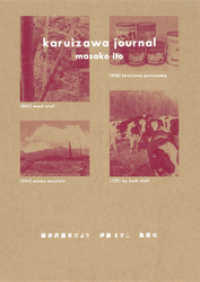Description
From anatomy and diagnostic criteria through specific mapping and ablation techniques, Catheter Ablation of Cardiac Arrhythmias, 4th Edition, covers all you need to know in this fast-changing field. Ideal for practitioners who need a comprehensive, user-friendly ablation text for the electrophysiology lab or office setting, this authoritative reference offers quick access to practical content, using detailed tables and high-quality images to help you apply what you learn in your practice.- Incorporates recent, exciting developments in the field, including new mapping, imaging, and catheter technologies and ablation techniques.- Contains new chapters on Pulmonary Vein Isolation by a Cryoballoon Catheter; Substrate-Based Ablation for Ventricular Tachycardia; and Ablation of Genetically Triggered Ventricular Tachycardia/Fibrillation.- Offers new and expanded coverage of difficult cases VT ablation, including VT storm and use of hemodynamic support during ablation; new techniques for ablation of persistent and long-lasting persistent atrial fibrillation; cryoballoon-based pulmonary vein isolation to treat atrial fibrillation; and more.- Offers expert guidance on atrial tachycardia and flutter, atrial fibrillation, atrioventricular nodal reentrant tachycardia, tachycardias related to accessory atrioventricular connections, ventricular tachycardia, transseptal catheterization techniques, ablation for pediatric patients, and patient safety and complications.- Helps you master each approach with exceptional visual guidance from nearly 300 new illustrations and figures, including many new ECGs, intracardiac recordings, as well as 3D mapping, ultrasound and fluoroscopic images.- Includes numerous tables that provide quick access to key points, arrhythmia mechanisms, diagnostic criteria, target sites for ablation, use of special equipment, complications, and troubleshooting problems and their solutions.
Table of Contents
CATHETER ABLATION OF CARDIAC ARRHYTHMIAS4TH EDITIONTABLE OF CONTENTSPART 1: FUNDAMENTAL CONCEPTS OF TRANS-CATHETER ENERGY DELIVERY1. Biophysics and Pathophysiology of Radiofrequency Lesion Formation2. Guiding Lesion Formation During Radiofrequency Energy Catheter Ablation3. Irrigated Radiofrequency Catheter Ablation4. Catheter Cryoablation: Biophysics and Clinical Applications5. Cardiac Anatomy for Catheter Mapping and Ablation of ArrhythmiasPART 2: CARDIAC MAPPING AND IMAGING6. Fundamentals of Intracardiac Mapping7. Catheter Three-Dimensional Mapping Systems8. Remote Catheter Navigation Systems9. Intracardiac Echocardiography, Computed Cardiac Tomography, and Magnetic Resonance Imaging for Guiding Mapping and AblationPART 3: CATHETER ABLATION OF ATRIAL TACHYCARDIAS AND FLUTTER10. Ablation of Focal Atrial Tachycardias11. Ablation of Cavo-Tricuspid Isthmus-Dependent Atrial Flutter12. Ablation of Nonisthmus-Dependent Flutters and Atrial Macroreentry13. Ablation of Postoperative Atrial Tachycardia in Congenital Heart DiseasePART 4: CATHETER ABLATION OF ATRIAL FIBRILLATION14. Pulmonary Vein Isolation for Atrial Fibrillation15. Pulmonary Vein Isolation by a Cryoballoon Catheter16. Ablation of Non-Pulmonary Vein Triggers17. Substrate-Based Ablation for Atrial Fibrillation18. Ablation of AF Drivers: Focal Impulse and Rotor Modulation (FIRM)19. Ablation of Persistent and Long-Lasting Persistent Atrial Fibrillation20. Epicardial and Endocardial Hybrid Ablation for Atrial FibrillationPART 5: CATHETER ABLATION OF ATRIOVENTRICULAR NODAL REENTRY TACHYCARDIA AND THE ATRIOVENTRICULAR JUNCTION21. Ablation of Atrioventricular Junctional Tachycardias: Atrioventricular Nodal Reentry, Variants, and Focal Junctional Tachycardia22. Atrioventricular Junction Ablation for Heart-Rate Control of Atrial FibrillationPART 6: CATHETER ABLATION OF ACCESSORY ATRIOVENTRICULAR CONNECTIONS23. Ablation of Free-Wall Accessory Pathways24. Ablation of Posteroseptal Accessory Pathways25. Ablation of Superoparaseptal and Midseptal Accessory Pathways26. Ablation of Atriofascicular Accessory Pathways and Variants27. Special Problems in Ablation of Accessory PathwaysPART 7: CATHETER ABLATION OF VENTRICULAR TACHYCARDIA28. Ablation of Ventricular Outflow Tract Tachycardias29. Ablation of Idiopathic Left and Right Ventricular and Fascicular Tachycardias30. Ablation of Ventricular Tachycardia in Coronary Artery Disease31. Ablation of Ventricular Tachycardia Associated with Nonischemic Cardiomyopathy32. Ablation of Unstable Ventricular Tachycardia and Idiopathic Ventricular Fibrillation33. Substrate-Based Ablation for Ventricular Tachycardia34. Epicardial Approach to Catheter Ablation of Ventricular Tachycardia35. Ablation of Ventricular Tachycardia with Congenital Heart Disease36. Ablation of Genetically Triggered Ventricular Tachycardia37. Ablation of Ventricular Tachycardia with Percutaneous Hemodynamic Support PART 8: MISCELLANEOUS TOPICS38. Complications Associated with Radiofrequency Catheter Ablation of Arrhythmias39. Atrial Transseptal Catheterization40. Special Considerations for Ablation in Pediatric Patients








